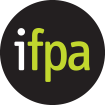– Release date: 11 August 2004
or over 20 years the issue of abortion has been a constant theme in Irish political life. During this time at least 110,000 women have travelled from Ireland to terminate their crisis pregnancies in the UK.
The IFPA aims to achieve a society in which women do not need to leave Ireland to terminate their crisis pregnancies. The Association would also seek to ensure that the greatest possible number of women who do terminate their pregnancies do so within the first 12 weeks.
The IFPA welcomes the British Pregnancy Advisory Service’s move to ensure greater choice of safe and legal options for women who seek to terminate their pregnancy. A spokesperson for the Association stated; “We await with interest the British Department of Health’s decision on whether to grant permission for the trial, a trial which will help to determine the safety and acceptability of home terminations.”
Gynaecologists advise that abortion in the first trimester is significantly preferable to a later abortion, from the point of view of the women’s health.
The spokesperson added that “What effect this will have for women travelling from Ireland remains to be seen”.
Early medical abortion is not usually available for women travelling from Ireland because it requires more than one visit to the clinic and a minimum stay of 3-4 days in the UK.
Early Medical Abortion
This method, which is available only in the first nine weeks of pregnancy, is also known as the abortion pill.
During an early medical abortion drugs are used to cause an early miscarriage. One works by blocking the action of the hormone that makes the lining of the womb hold onto the fertilised egg and the other given 48 hours later, cause the uterus to cramp. The lining of the uterus breaks down and the embryo is lost in the bleeding that follows, as happens with a miscarriage.
This method of abortion requires two visits to a clinic on separate occasions, two days apart, plus a post abortion check a week later.
At the first appointment tablets of a drug called Mifepristone (sometimes called Mifegyne or Ru486) are given. A short wait at the clinic is necessary to ensure that the tablets have been absorbed properly.
Most women spend the two days between the appointments carrying out their usual activities at home or at work. During this time some women have some bleeding and period-like pains but it is unlikely that the abortion itself will occur.
At the second appointment tablets of the second drug (prostaglandin) are given. This causes contractions in the uterus that may be quite painful. At this stage bleeding usually starts or, if it has already started, it is likely to increase.
A follow up visit to a doctor is essential to ensure that it is complete.
Some women choose an early medical abortion because it is more like a natural miscarriage and avoids any anaesthesia or the use of instruments. It is associated with a lower rate of infection.
Source: British Pregnancy Advisory Service
*
What are BPAS proposing?
BPAS are seeking permission from the British Department of Health to conduct a trial allowing 500 women to take the misoprostol tablets at home.
How Safe is Early Medical Abortion
Medical methods of abortion have proven to be safe and effective (Ashok et al 1998a), Peyron et al 1993, Schaff et al, 1999, Spitz et al 1998, Trussel and Ellerston 1999, Urquhart et al, 1997, Winikoff et al 1997).
The effects of medical methods of abortion are similar to those associated with spontaneous abortion (miscarriage) and include cramping and prolonged menstrual-like bleeding. Bleeding occurs for nine days on average but can last up to 45 days in rare cases (Creinin and Aubeny, 1999).
Side-effects include nausea, vomiting and diarrhoea. Conditions that warrant caution with the use of mifeprisone and a prostaglandin include chronic or acute adrenal or hepatic failure, bleeding disorders, heavy smoking and allergies to any of the drugs used.
Mifepristone is not an effective treatment for ectopic pregnancy; suspicion of ectopic pregnancy demands further investigation and, if confirmed, immediate treatment.
Efficiacy rates up to 98% are reported for mifeprisone and prostaglandin (Trussell and Ellertson, 1999).
Most protocols require that women take both Mifepristone and prostaglandin under clinical supervision, involving a second visit to the health care facility two days after receiving mifeprirstone to take the prostaglandin.
Some investigations consider that the second visit may be unnecessary and suggest that women be allowed to take the prostaglandin at home. What BPAS is proposing is to investigate the safety and appropriateness of this in a UK context.
Source: Safe Abortion Technical and Policy Guidance for Health Systems, World Health Organisation, 2003.
*
Other countries
In 1981 mifepristone was approved by the United Kingdom Licensing Authority for use in Great Britain, and in 1992 was approved for use in Sweden.
Mifepristone has been registered for use in 14 countries in Europe:
Austria, Belgium, Denmark, Finland, France, Germany, Great Britain, Greece, Luxembourg, the Netherlands, Norway, Spain, Sweden and Switzerland.
In addition to the United States, the drug has been registered in China, Israel, New Zealand, Russia, South Africa, Taiwan, Tunisia and Ukraine.
* * * *
Useful Links:
World Health Organisation – Safe Abortion Technical and Policy Guidance for Health Systems (pdf file)
UNDP Site – Abortion Policies A Global Review
